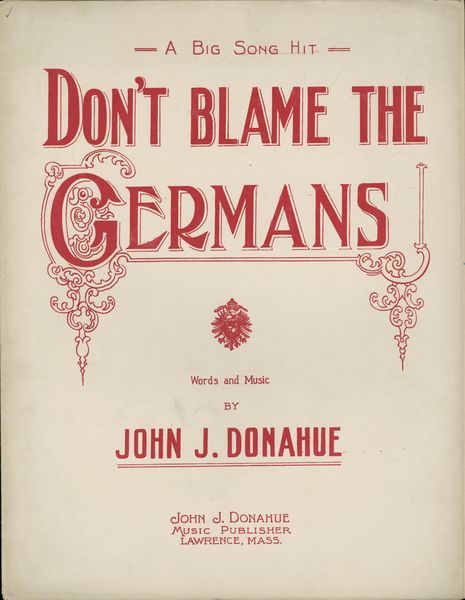HENRY FORD SAILED INTO A SEA OF HEADACHES
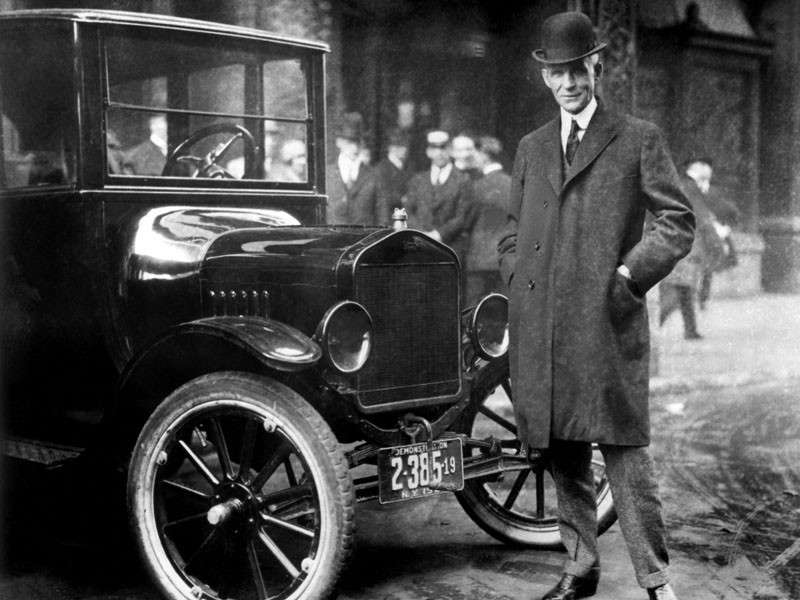 Blessed are the peacemakers, the Good Book tells us, for they shall see God. But Scripture says nothing about the attempted peacemakers, for they shall see spectacular failure.
Blessed are the peacemakers, the Good Book tells us, for they shall see God. But Scripture says nothing about the attempted peacemakers, for they shall see spectacular failure.
Exactly 101 years ago a famous American tried (in John Lennon’s later words) to give peace a chance. And all he got in return was ridicule and a huge hit to his bank account.
Let me tell you about Henry Ford and his disastrous Peace Ship.
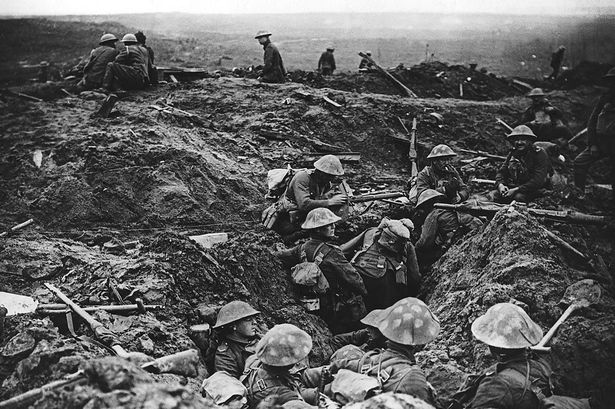 From the minute the guns began firing in August 1914, people the world over were appalled by World War I. There had never been anything like it. The sheer scope was mind-boggling, and after the first year it was obvious the death toll would be horrific.
From the minute the guns began firing in August 1914, people the world over were appalled by World War I. There had never been anything like it. The sheer scope was mind-boggling, and after the first year it was obvious the death toll would be horrific.
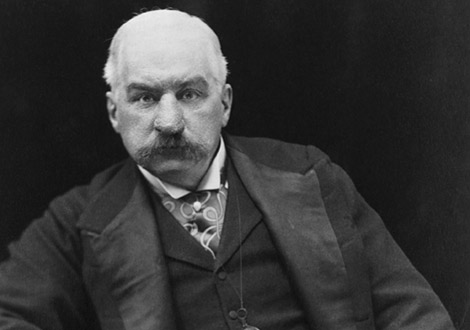 American public opinion was a tangled plate of spaghetti. The Eastern Establishment was strongly pro-British, with New York bankers (especially J. P. Morgan) loaning millions of dollars to London and Paris.
American public opinion was a tangled plate of spaghetti. The Eastern Establishment was strongly pro-British, with New York bankers (especially J. P. Morgan) loaning millions of dollars to London and Paris.
But there were millions of German immigrants in the U. S. (including my own great-grandparents), and a big chunk of them were rooting for the Old Country. In fact, fundraisers were even held here to send financial support to the Fatherland.
On top of all that, there was widespread feeling among everyday folks that America should steer clear of the whole thing. This was Europe’s mess after all, let them keep it to themselves.
Needless to say, President Woodrow Wilson walked a tightrope as he tried to steer America on a neutral course.
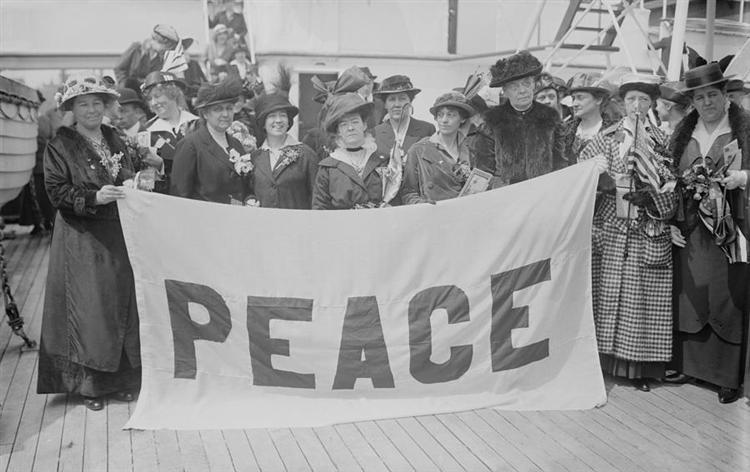 Yet with casualties mounting, some Americans wanted the bloodshed to end. Which is where Henry Ford enters the story.
Yet with casualties mounting, some Americans wanted the bloodshed to end. Which is where Henry Ford enters the story.
Basking in the record-setting success of his Model T, Ford was a genius at self-promotion. He marketed himself as the man who had made the automobile affordable for the Common Man, and people loved him for it.
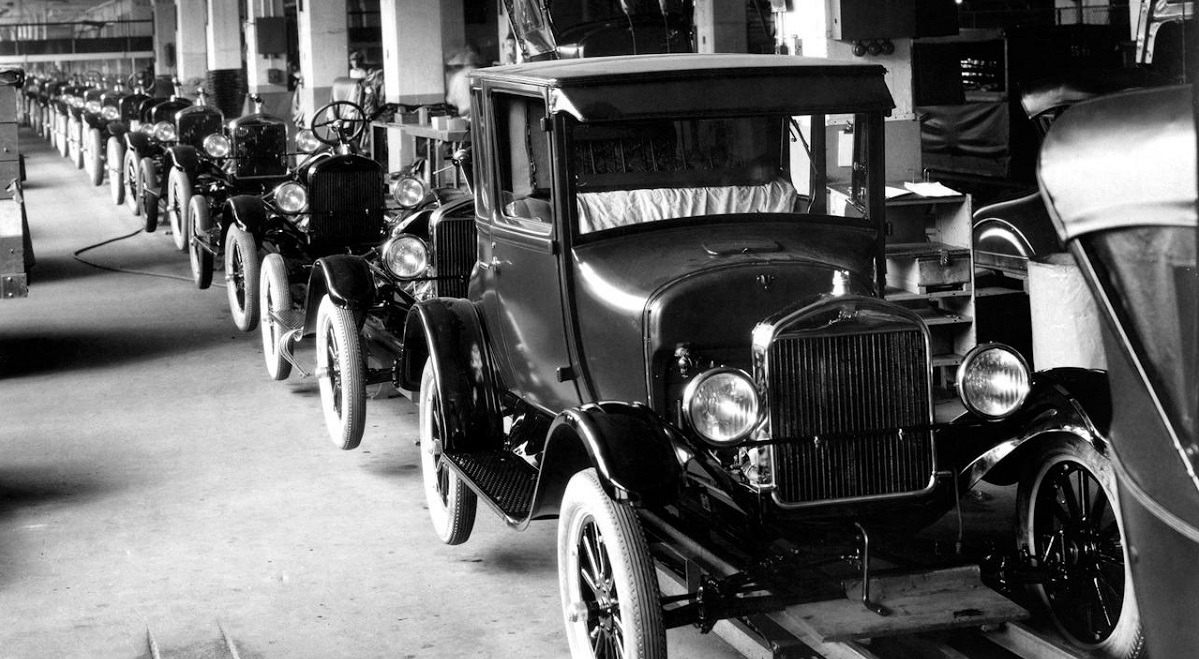 Ford wasn’t well-educated (he had dropped out of school at age 16 to become an apprentice mechanic). A bonafide pacifist, he was genuinely horrified by the wholesale slaughter and wanted it to stop. And there was something else: with so much money being pumped into the war, people in Britain and France couldn’t afford to buy his cars. World War I was taking a big bite out of Ford’s bottom line.
Ford wasn’t well-educated (he had dropped out of school at age 16 to become an apprentice mechanic). A bonafide pacifist, he was genuinely horrified by the wholesale slaughter and wanted it to stop. And there was something else: with so much money being pumped into the war, people in Britain and France couldn’t afford to buy his cars. World War I was taking a big bite out of Ford’s bottom line.
So he began speaking out against the conflict in early 1915. Soon peace activists approached him with a radical idea. They asked Ford to charter an ocean liner, fill it with fellow pacifists and sail to Europe where they would persuade the warring nations to make peace.
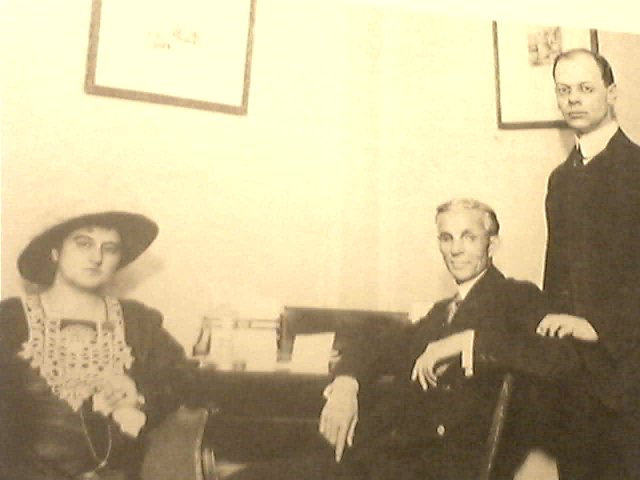 The driving forces in this unlikely scheme were Louis Lochner, a crusading anti-war journalist and Rosika Schwimmer, a Hungarian-born Jew who took time from writing for various newspapers to crusade for women’s rights and peace on both sides of the Atlantic.
The driving forces in this unlikely scheme were Louis Lochner, a crusading anti-war journalist and Rosika Schwimmer, a Hungarian-born Jew who took time from writing for various newspapers to crusade for women’s rights and peace on both sides of the Atlantic.
Ford not only jumped at their proposal, he agreed to join them on the trip. His celebrity status and deep pockets, combined with Lochner and Schwimmer’s press contacts, guaranteed high-profile newspaper coverage. The media quickly dubbed the adventure the “Peace Ship.”
 The group set about getting their ducks in a row. Ford arranged a private meeting with President Wilson, asking for the mission to be given official status. Wilson said nice things, but was skeptical. He gave his personal blessing and nothing more. Coming out of the White House, Ford bitterly grumbled to Lochner, “Wilson is a small man.”
The group set about getting their ducks in a row. Ford arranged a private meeting with President Wilson, asking for the mission to be given official status. Wilson said nice things, but was skeptical. He gave his personal blessing and nothing more. Coming out of the White House, Ford bitterly grumbled to Lochner, “Wilson is a small man.”
The group invited leading VIPs to sail with them including Helen Keller, two-time Democratic presidential nominee William Jennings Bryan and social activist Jane Addams among many others. All said, “Thanks, but no thanks,” though plenty of lesser luminaries signed on.
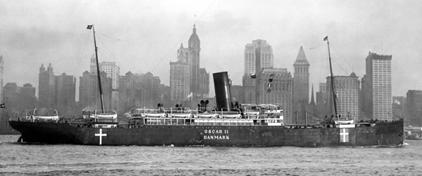 Ford booked the SS Oscar II for the big trip. Giant white crosses were painted on each side of the hull to remind submarine skippers of the ship’s mission. When departure day finally arrived on Saturday, December 4, 15,000 people gathered in Hoboken, New Jersey to say bon voyage. Newspaper accounts described the atmosphere as “circus-like.” While the crowd sang a popular anti-war ditty called “I Didn’t Raise My Boy To Be A Soldier,” a prankster plopped a crate of squirrels on the deck with a sign saying “To the Good Ship Nutty.”
Ford booked the SS Oscar II for the big trip. Giant white crosses were painted on each side of the hull to remind submarine skippers of the ship’s mission. When departure day finally arrived on Saturday, December 4, 15,000 people gathered in Hoboken, New Jersey to say bon voyage. Newspaper accounts described the atmosphere as “circus-like.” While the crowd sang a popular anti-war ditty called “I Didn’t Raise My Boy To Be A Soldier,” a prankster plopped a crate of squirrels on the deck with a sign saying “To the Good Ship Nutty.”
 At the very last minute, Henry Ford discovered he didn’t have a passport. So one was rushed to him on the ship. (Talk about cutting it close!) When his BFF Thomas Edison came aboard to wish him good luck, Ford said, “I’ll give you a million dollars to come with us.” Edison just smiled and shook his head.
At the very last minute, Henry Ford discovered he didn’t have a passport. So one was rushed to him on the ship. (Talk about cutting it close!) When his BFF Thomas Edison came aboard to wish him good luck, Ford said, “I’ll give you a million dollars to come with us.” Edison just smiled and shook his head.
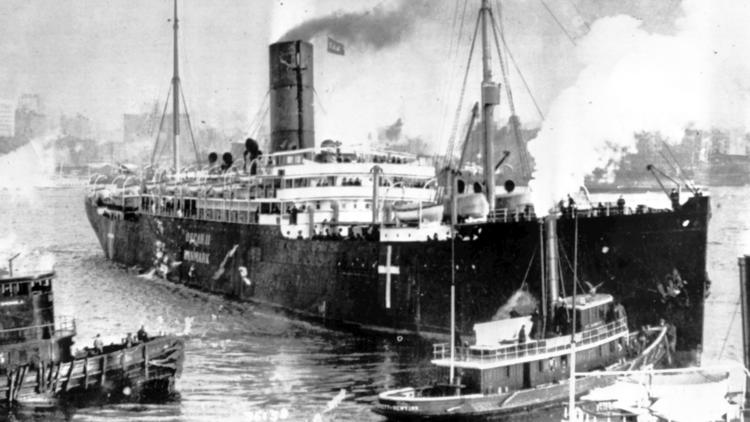 Horns blew, propellers began turning and the Oscar II headed for Europe filled with 63 pacifists, 54 reporters and, as one newspaper reported, “four Chicago babies.”
Horns blew, propellers began turning and the Oscar II headed for Europe filled with 63 pacifists, 54 reporters and, as one newspaper reported, “four Chicago babies.”
There was a loud splash as a man jumped off the dock and swam after the ship. Hauled out of the water, he identified himself as Mister Zero, a self-professed human rights crusader who told police he was “swimming to reach public attention.”
To give you an idea of the naivete involved, some of the pacifists had never sailed before and mistook gulls following the ship for doves, which they thought was a good omen. (And these were the people who were going to talk the world’s superpowers into putting down their guns.)
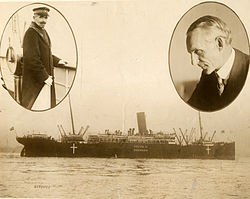 For folks who renounced violence, the pacifists sure loved fighting among themselves. The Oscar II had been at sea three days when it received important breaking news by radio: President Wilson was asking Congress to significantly beef up the army and navy just in case the U. S. should enter the war.
For folks who renounced violence, the pacifists sure loved fighting among themselves. The Oscar II had been at sea three days when it received important breaking news by radio: President Wilson was asking Congress to significantly beef up the army and navy just in case the U. S. should enter the war.
That split the peace activists down the middle. Half of them wanted to adopt a resolution rejecting Wilson’s call; the others wanted to stand by America, right or wrong (so long as it didn’t declare war on anybody). And each side savagely attacked the other.
Ford was visibly shaken by the nasty fighting. This wasn’t the big, happy family gathering he had envisioned.
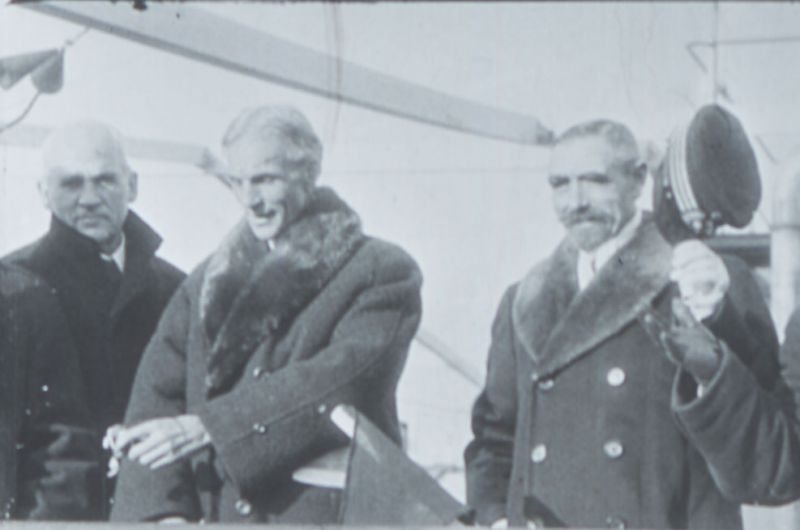 Just when things couldn’t get any worse … they did. Influenza broke out and spread through the Peace Ship. Ford was among those taken sick. At one point, reporters burst into his room to check out claims that he had died. He angrily threw them out, although another passenger actually did die from the flu.
Just when things couldn’t get any worse … they did. Influenza broke out and spread through the Peace Ship. Ford was among those taken sick. At one point, reporters burst into his room to check out claims that he had died. He angrily threw them out, although another passenger actually did die from the flu.
As they neared Europe with half the passengers ill and half refusing to speak to the others, one final indignity awaited. When Oscar II dropped anchor in Copenhagen, Denmark on December 19, only eight curious college students were on hand to greet the Peace Ship. Europeans, it turned out, weren’t interested in Americans meddling in their affairs.
Sick, disgusted and discouraged, Henry Ford quietly slipped ashore, booked passage on a different ocean liner and sailed home.
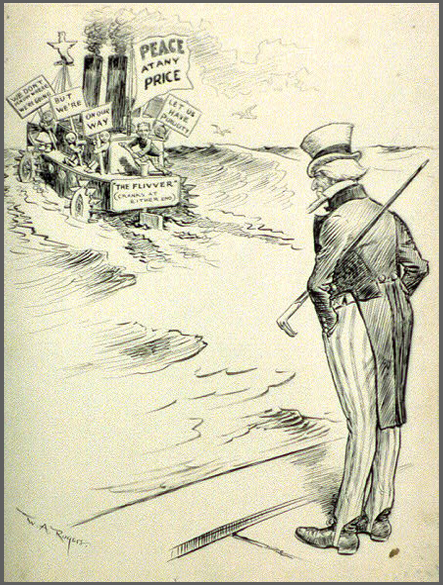 The Peace Ship continued on its original mission, going from one European nation to another. No one paid any attention. It was now a floating joke.
The Peace Ship continued on its original mission, going from one European nation to another. No one paid any attention. It was now a floating joke.
Henry Ford kept paying the bills until the pacifists finally waved the white flag. The debacle ultimately wound up costing him $500,000 (more than $9.2 million today), with nothing but national scorn to show for his efforts.
In hindsight, the Peace Ship was doomed from the start. Though the mission was zany, it was no Ship of Fools. Its organizers went on to do serious things. Henry Ford made a second fortune with his hugely successful Model A. Rosika Schwimmer became Hungary’s ambassador to Switzerland, one of the world’s first female ambassadors. And Louis Lochner eventually won a Pulitzer Prize in journalism for his reporting on the runup to World War II.
Although the whole thing seems harebrained today, given that more than 17 million people ultimately died in World War I (and another 60 million in the war that followed it), you can’t deny its intentions were noble.
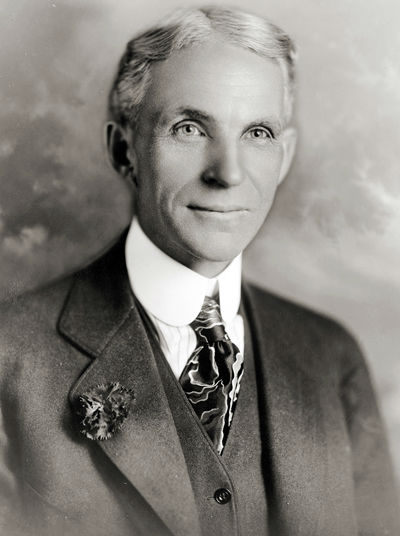 As one man wrote of Henry Ford in a letter published in a newspaper in late December 1915, “To me the big thing in his action is not the question of whether he will or will not stop the war, but the fact that he was willing to try.”
As one man wrote of Henry Ford in a letter published in a newspaper in late December 1915, “To me the big thing in his action is not the question of whether he will or will not stop the war, but the fact that he was willing to try.”
Did you find this enjoyable? Please continue to join me each week, and I invite you to read Tell it Like Tupper and share your review!
Curious about Tell It Like Tupper? Here’s a chance to see for yourself. Take a sneak peek at a couple chapters in this free downloadable excerpt.


